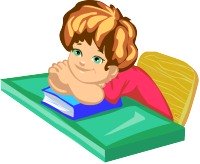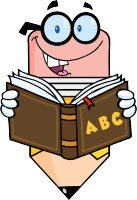Homeschool Reading Curriculum for 2nd Grade
The homeschool reading curriculum for 2nd grade reinforces phonics and introduces advanced concepts like vowel teams and digraphs for decoding skills. The diverse literature includes chapter books and complex stories to enhance comprehension skills. Guided reading sessions focus on more profound comprehension, character analysis, and story elements. The curriculum cultivates a well-rounded reader by balancing phonics mastery with a love for engaging literature.
Homeschool Reading Curriculum for 2nd Grade Sample
Weeks 1-4: Phonics Reinforcement
- Review and reinforce short vowel sounds and basic consonant blends.
- Introduce vowel teams and digraphs to enhance decoding skills.
- Engage in phonics games and activities.
Weeks 5-8: Sight Words Expansion
- Expand sight word vocabulary with a focus on commonly used words.
- Incorporate sight words into short sentences and simple stories.
- Use interactive games and flashcards for reinforcement.
Weeks 9-12: Introduction to Chapter Books
- Introduce early chapter books with more complex narratives.
- Read together and discuss the main ideas and characters.
- Begin to explore longer, more detailed stories.
Weeks 13-16: Genre Exploration
- Explore different literary genres, including fiction, non-fiction, and poetry.
- Read books from each genre and discuss their unique features.
- Encourage students to express preferences and analyze genre characteristics.

Weeks 17-20: Comprehension Skills
- Focus on more profound comprehension skills, including character analysis and story elements.
- Implement guided reading sessions with a variety of texts.
- Encourage discussions about character motivations and story events.
Weeks 21-24: Vocabulary Building
- Introduce and expand vocabulary with more challenging words.
- Discuss word meanings and use new words in sentences.
- Read texts with rich language to expose students to varied expressions.
Weeks 25-28: Book Reports and Projects
- Introduce basic book reports and projects.
- Encourage students to summarize and express their opinions about the books they read.
- Explore creative projects related to favorite stories.
Weeks 29-32: Poetry Appreciation
- Introduce different forms of poetry.
- Explore rhyme schemes, rhythms, and poetic devices.
- Encourage students to create their simple poems.
Weeks 33-36: Review and Celebration
- Review key concepts learned throughout the year.
- Celebrate progress with a reading-themed activity or project.
- Provide a list of recommended books for summer reading.
Adjust this homeschool reading curriculum for 2nd Grade based on your child's readiness and interests. Incorporate hands-on activities, discussions, and opportunities for independent reading to maintain engagement and foster a love for literature.

Homeschool Reading Curriculum for 2nd Grade Time Spent
For 2nd-grade homeschoolers, the recommended amount of time spent on reading activities can vary. Still, a general guideline is approximately 30 to 45 minutes per day. Here's a suggested breakdown:
1. Daily Reading Aloud (15-20 minutes):
- Begin each day with a read-aloud session using age-appropriate and engaging books.
- Discuss the story and characters and encourage questions.
2. Phonics and Sight Words Practice (10-15 minutes):
- Focus on phonics exercises and sight word practice to build and reinforce foundational reading skills.
- Utilize games, flashcards, and interactive activities.
3. Guided Reading (10-15 minutes):
- Implement guided reading sessions with leveled books.
- Work on deeper comprehension, character analysis, and story elements.
4. Independent reading (5-10 minutes):
- Encourage independent reading with books suitable for the child's reading level.
- Gradually increase the reading time as the child's skills progress.
5. Literacy-Related Activities (5-10 minutes):
- Incorporate literacy-related activities such as creative writing, vocabulary games, or book-related projects.
- Keep these activities interactive and enjoyable.
When helping a child learn to read, it is essential to keep their individual needs and attention span in mind. Short, focused sessions spread throughout the day can be more effective than one long session. It is also helpful to tailor the reading material to the child's interests and gradually increase the complexity of the texts as their skills improve. The ultimate goal is to create a positive and enjoyable learning experience that encourages a love of reading.


